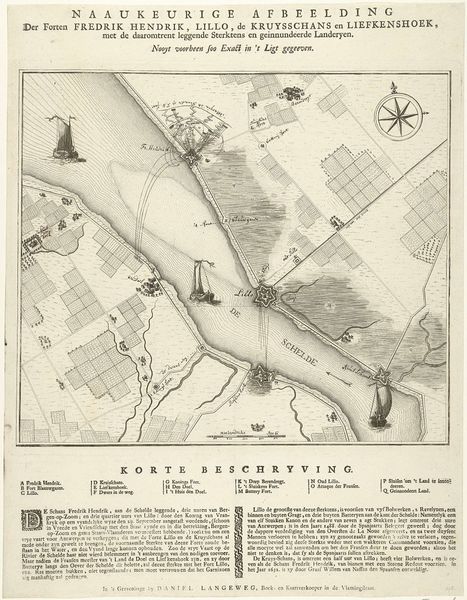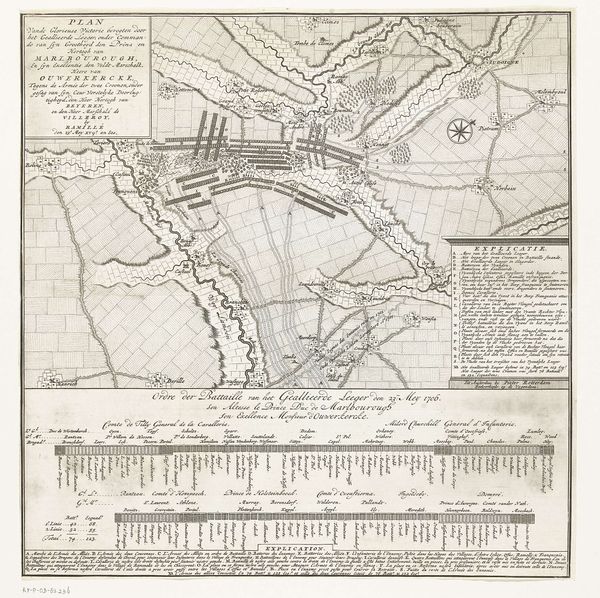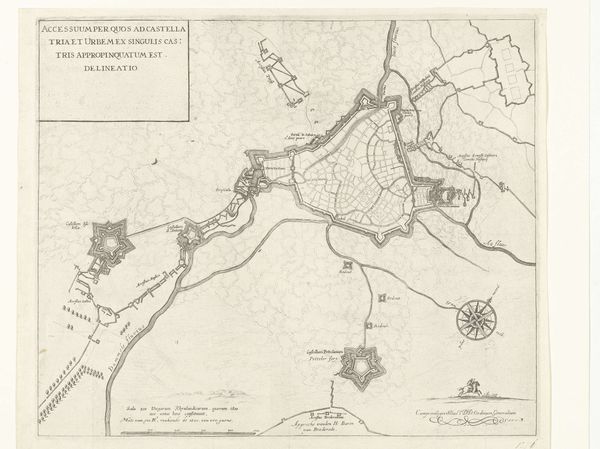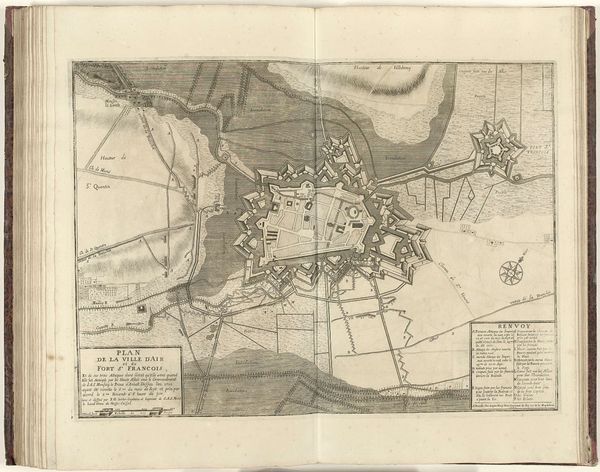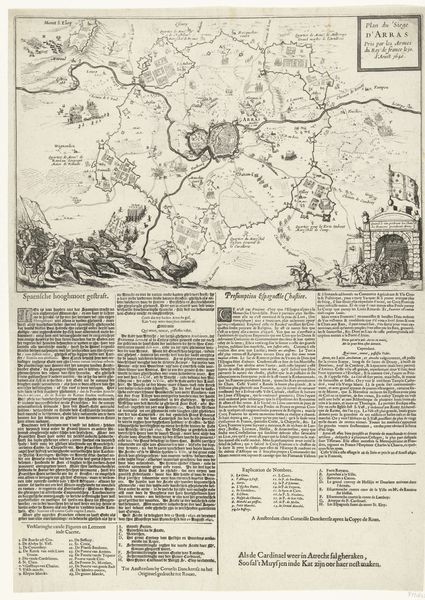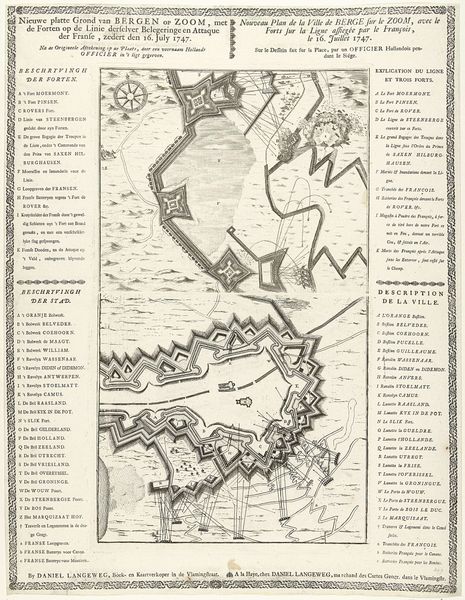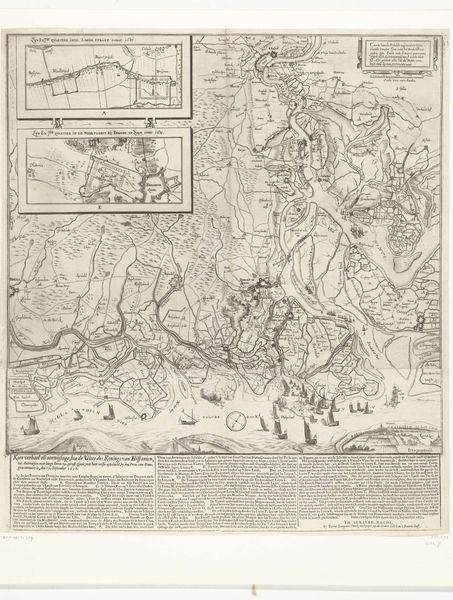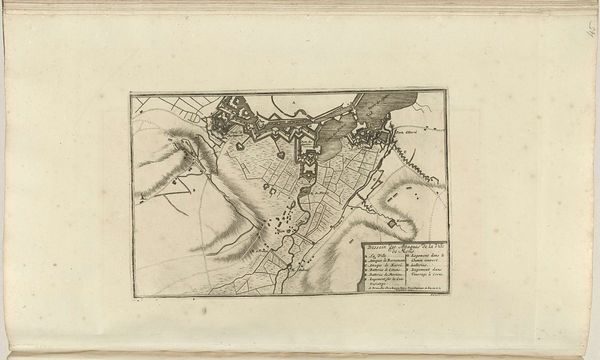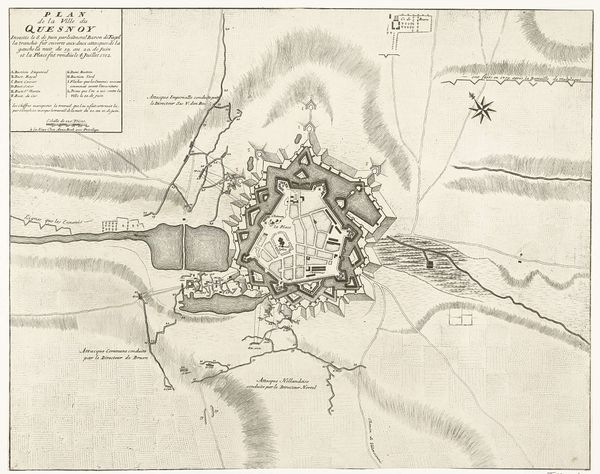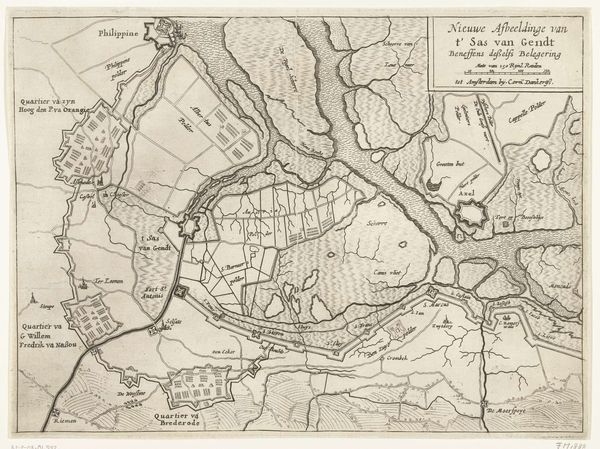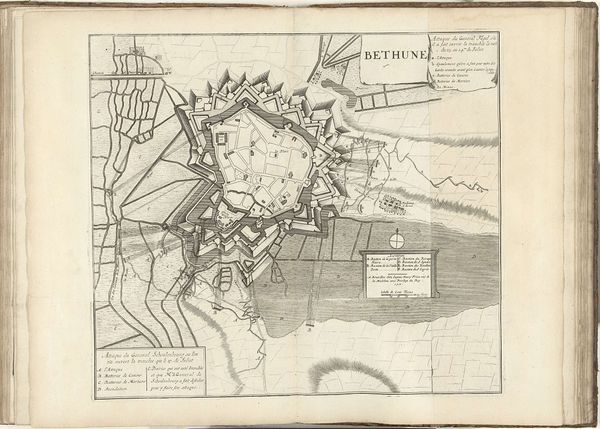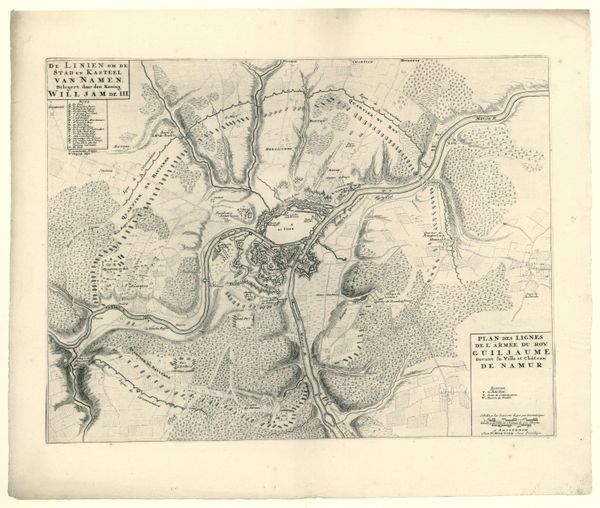
print, paper, ink, engraving
#
pen and ink
#
dutch-golden-age
# print
#
paper
#
ink
#
geometric
#
cityscape
#
engraving
Dimensions: height 438 mm, width 542 mm
Copyright: Rijks Museum: Open Domain
This map of the siege of Den Bosch by Frederik Hendrik in 1629 was created by an anonymous artist. It’s an engraving, made by cutting lines into a metal plate, inking it, and then pressing paper against it. The material quality of the paper is important here. It had to be robust enough to receive the fine lines of the print, yet flexible enough to conform to the plate. Look closely, and you can see the physical pressure exerted by the printing press in the crispness of the lines and the evenness of the ink. Cartography in this period was a high-stakes endeavor, bound up with military strategy and territorial claim. The skilled labor of the engraver, therefore, was crucial to projecting power. The map isn’t just a document; it’s a declaration of intent, made possible by this ingenious reproductive medium. Consider the amount of work involved in its production. It really makes you think about how the history of art is so closely tied to materials, labor, politics, and consumption.
Comments
No comments
Be the first to comment and join the conversation on the ultimate creative platform.
